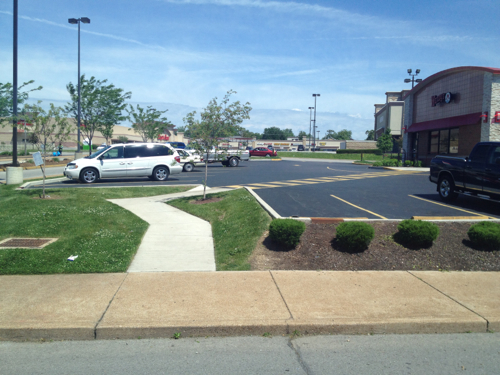History bulldozed on this day in 1963

One of my favorite books is St. Louis Day by Day by Frances Hurd Stadler (1989). The entry for July 24th takes us back to 1963, forty-seven years ago today:
Bulldozers moved in to demolish the large cast-iron watering trough at the triangle formed by the intersection of Franklin, Easton and Leffingwell avenues. Made of fourteen sections bolted together, the trough had long served as a refreshment spot for some of the city’s busiest draft horses. Franklin and Easton, now Dr. Martin Luther King Drive, had formed part of the first road to St. Charles. As the nation expanded west, this link became vital, joining with roads beyond St. Charles up the Missouri River, and eventually branching off onto the Santa Fe Trail.
Within the city, Easton was an important business thoroughfare, and the Y formed by the three streets was the logical place for trade wagons to halt and for horses to drink. The only remaining St. Louis example of this once-common feature of equine architecture can be found at Alabama, Virginia, and Ivory avenues, where neighborhood residents have built a small park and planted the old watering through with flowers.
Today the triangle of Franklin, Easton & Leffingwell isn’t a triangle. The Franklin side was removed when Dr. Martin Luther King Drive received new curbs and sidewalks, around 2004.
Since the book was published the flowers have been replaced by a fountain at the Ivory Triangle:

I wonder if the trough that was removed in 1963 would be an interesting community spot had it remain?
– Steve Patterson

 Naturally the Wendy’s is your typical cheap suburban (auto centric) design — far from the street, surrounded by too much parking, etc. Something you’d expect off a freeway exit ramp but not what I’d want in an urban context. Although as we keep building more of this crap our once walkable urban neighborhoods will look just like the ugly ring around the outside of our region and most regions in America.
Naturally the Wendy’s is your typical cheap suburban (auto centric) design — far from the street, surrounded by too much parking, etc. Something you’d expect off a freeway exit ramp but not what I’d want in an urban context. Although as we keep building more of this crap our once walkable urban neighborhoods will look just like the ugly ring around the outside of our region and most regions in America.

